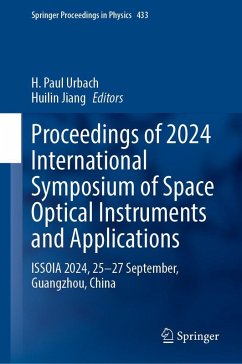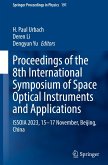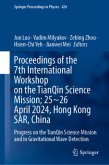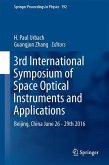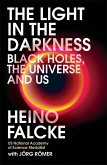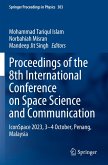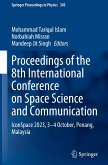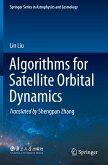This proceedings book contains selected and expanded contributions presented at the 9th International Symposium of Space Optical Instruments and Applications (ISSOIA 2024), held in Guangzhou, China, from 25 to 27 September 2024. The symposium was hosted by the Chinese Society of Astronautics and the International Joint Research Center for Space Optical Instruments, jointly hosted by the China Association of Remote Sensing Application and organized by the Beijing Institute and Space Mechanics and Electricity.
In recent years, space optical payloads are advancing toward high spatial resolution, high temporal resolution, high radiometric resolution, and high spectral resolution, while simultaneously becoming more intelligent. The commercial remote sensing sector has made steady progress in terms of the scope of satellite systems and applications. Meanwhile, space optical remote sensing data has been extensively applied to resources monitoring, meteorology, oceanography, environmental science, disaster reduction, and many other fields.
The theme of ISSOIA2024 was "Expanding New Perspectives in Spatial Perception Technology, Empowering Sustainable Development with Spatial Information". The symposium focused on the active research areas of optical remote sensing technologies and their applications, providing a global platform for in-depth discussion on topics such as advanced optical technologies and new remote sensing techniques for space applications, advanced optical materials and photoelectric conversion devices for space applications, space optical instruments and applications for deep space exploration and astronomical observation, space optical instruments for ecological and environmental applications, commercial space optical remote sensing technology and services, and remote sensing technologies to better serve the development of the Guangdong-Hong Kong-Macao Greater Bay Area.
In recent years, space optical payloads are advancing toward high spatial resolution, high temporal resolution, high radiometric resolution, and high spectral resolution, while simultaneously becoming more intelligent. The commercial remote sensing sector has made steady progress in terms of the scope of satellite systems and applications. Meanwhile, space optical remote sensing data has been extensively applied to resources monitoring, meteorology, oceanography, environmental science, disaster reduction, and many other fields.
The theme of ISSOIA2024 was "Expanding New Perspectives in Spatial Perception Technology, Empowering Sustainable Development with Spatial Information". The symposium focused on the active research areas of optical remote sensing technologies and their applications, providing a global platform for in-depth discussion on topics such as advanced optical technologies and new remote sensing techniques for space applications, advanced optical materials and photoelectric conversion devices for space applications, space optical instruments and applications for deep space exploration and astronomical observation, space optical instruments for ecological and environmental applications, commercial space optical remote sensing technology and services, and remote sensing technologies to better serve the development of the Guangdong-Hong Kong-Macao Greater Bay Area.

